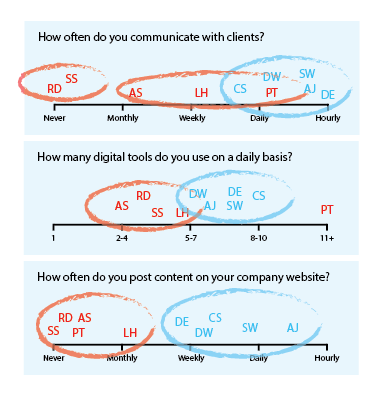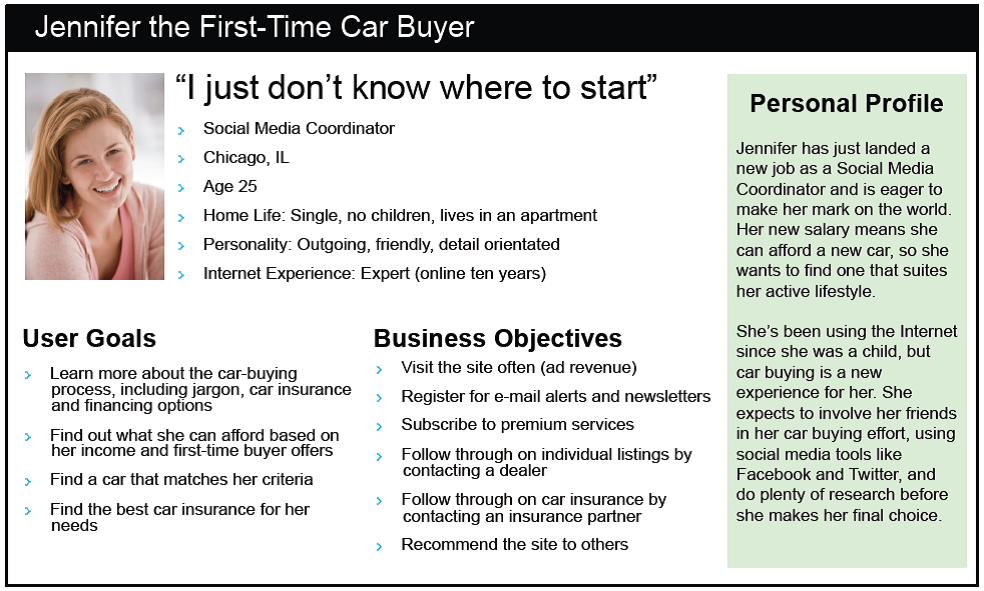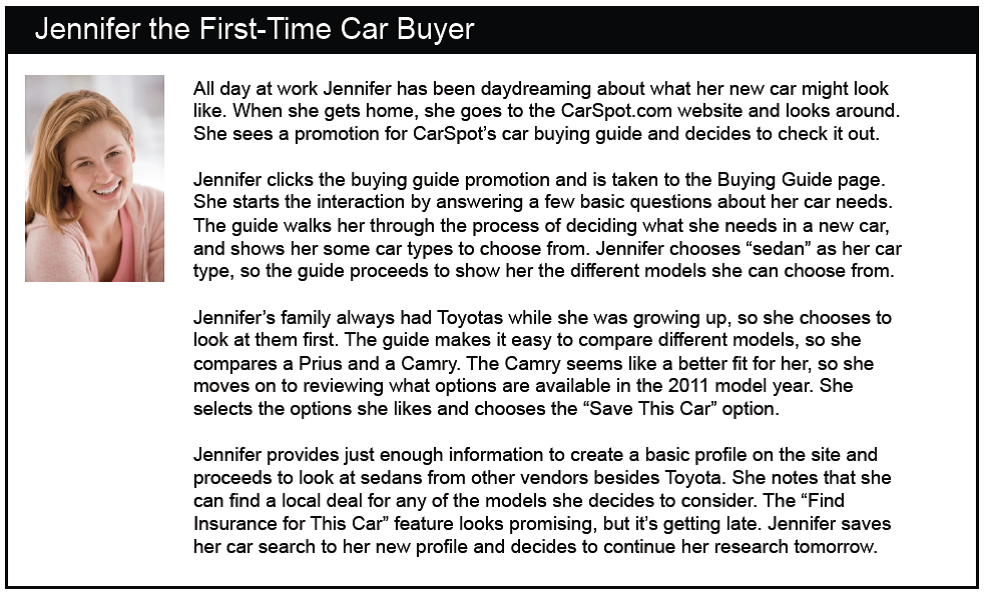CREATING PERSONAS FOR MARKETING AUTOMATION

How to create Personas
More than ever before, prospects are expecting to receive relevant, personalised information from your company. According to a report from Accenture, 73% of consumers said that they prefer to do business with companies that use their personal information to make their experience more relevant.
We’ve all heard the term “Content is King” and that’s true, it is very important to produce lots of high quality content, but even excellent content can look like spam when it’s served to the prospect at the wrong time. Consider this example: 3chillies have a great guide available for download on the topic of “Choosing the right Content Management System (CMS)”. For prospects looking to switch to a new CMS, an email containing information about where to download the document would be ideal. But what if that prospect has already recently upgraded their website and is more interested in support? Well, that email will look an awful lot like spam.
Inbound marketing should be a two-way conversation: the prospect tells you something about themselves implicitly (through the links that they click and the content they view) or explicitly (through form entries etc.), and your website responds by serving more relevant information on their preferred topic.
If your organisation have invested in a good marketing platform, content personalisation can be achieved both on the fly (whilst visitors browse your website) and in the emails that you send. As a Sitecore Gold Partner, the Sitecore Experience Platform is our weapon of choice.
We’ve previously written a 6-step guide on creating a marketing automation plan. In it, we identified that personalisation plays a huge part in making it a successful plan. To personalise our content effectively, we must first understand who each buyer is and what their objectives are.
In a perfect world, we’d write a personalised marketing automation plan for every single individual visitor, but realistically this would take far too much time. So instead, we’ll gather the prospects into target-groups called personas.
WHAT IS A PERSONA?
We’ve defined the word persona as “A composite picture of a target-group of people who buy, or might buy, products and services like the ones that you sell. Each persona type will share a set of metrics such as perceived success factors, perceived barriers, buyer journeys and buying triggers.”
Personas are a fundamental part of any good marketing automation plan. Not only do they allow you to personalise a buyer’s journey based on their position in the buying cycle, but you can personalise based on factors such as their requirements, goals and behaviours.
Let’s take a look at how to create a set of personas…
RESEARCH YOUR PROSPECTS
Before anything else, you’ll need to learn as much about your prospects as possible. As Socrates once said, “The only true wisdom is in knowing you know nothing", so don’t assume you already know what your prospects want – go ahead and ask them!
This post from Gartner provides a nice start helping you understand your prospects better. It outlines the important metrics we should consider when forming personas:
“Demographic — Defines the basic structure of a population based on geography, income, level of education, and other standard descriptive attributes.
Psychographic — Focuses on values, opinions, interests, aspirations, attitudes and lifestyles.
Ethnographic — Involves participatory observation where insights are gleaned by watching subjects in their daily routines and capturing what isn’t explicitly reported.
Transactional — Reveals insights through a historical customer relationship, including first- and third-party purchase histories and post-sale service records.
Behavioral — Captures data passively through engagement with websites, mobile devices and other media, content and channels that reveal how audiences engage over the course of a relationship.”
HOW TO COLLECT PROSPECT DATA
A mixture of data collection methods can be used to gather the information we need. Methods might include interviews, focus groups, user surveys and any other method where the research comes directly from the prospect. You might also choose to use analytical data from tools such as Google analytics or Sitecore analytics.
Using Gartner’s definitions above we can start to formulate a list of questions that we might ask in an interview with the prospects. You can start with generic questions like those that follow, but it’s recommended that you ask more questions that are specific to your business and the products that you sell:
Job Specific Questions:
What is your job role and job title?
How do you measure success at work?
What activities do you perform on a daily basis?
What activities are you fully responsible for?
Who do you report to for activities beyond your remit?
What are the biggest challenges you face?
How often do you communicate with customers?
How do you communicate with customers?
Person Specific questions:
What is your sex/age/ income/ educational background and address (city)?
What is your marital status
Do you have children
Questions specific to your company product / service (X)
How often do you shop for X
What digital tools do you use to find vendors for X
What would stop you from buying product X
What are your motivations for looking into X
The exact questions vary depending on the project in hand, but it’s important to form questions to ensure that you identify any obvious knowledge gaps before the interviews commence.
Work out who your most common prospects are and what their job role is. If you have more than one typical buyer, make sure you invite a good mixture of each, for example, if 3chillies were doing this exercise, we would invite a handful of CMOs, Digital Marketing Managers, CEOs and CTOs. There aren’t any firm guidelines on the number of prospects you should interview before stopping data collection for analysis; Just ensure that you interview enough people to recognise common patterns emerging. It’s usually possible to draw patterns from 5 participants for each job role.
During the interview try to ask as many open questions as possible. Ensure they’re leading questions, and ones that are worded in such a way that the answers help you better identify the prospects attitudes and behaviours.
If you aren’t able to interview your prospects, the next best thing is to interview the employees who interact most closely with your prospects. Although resorting to this tactic isn’t ideal, these employees will be able to give a relatively well informed view of each persona.
ANALYSING THE DATA
This stage is tricky because you’ll need to compare all of the data sets from the research stage in order to identify common behaviours and attitudes, and therefore personas.
A good way to start is through segmenting the participants by job role. It is possible that there are multiple personas per job role so we will need to define the main ones by going through each answer with a fine-tooth comb, noting down any common behaviours and attitudes for each job role.
There are many schools of thought for how best to analyse the answers to your interview questions. Some guides will tell you that an affinity mapping process is the best method to take, and that’s not a bad strategy. In fact, it’s a particularly useful method if you aren’t able to interview your prospects and have relied upon the knowledge of your employees instead.
One more effective way of recognising patterns and analysing your data would be through making a scale for each question, and positioning each interviewee somewhere along that scale based on the answers they provide to your questions. Then we can visualise whether or not conclusions can be drawn from the data. Let’s look at an example:
The 3 questions below might be questions that 3chillies would use when interviewing their target prospects. In the example, the initials of each CMO interviewee is labelled in blue and CTOs are labelled in red. I should add, this is just dummy data for illustrative purposes.

There are a number of conclusions we can draw from the clusters that have formed in these visualisations:
-
There are two different types of CTO – those that never contact clients, and those who contact clients on a regular but infrequent basis.
- CTOs tend to use a limited number of digital tools everyday
-
CTOs and don’t tend to post to their company website very often
-
CMOs communicate with clients very frequently.
-
CMOs use a large range of digital tools everyday
-
CMOs tend to post content on their website more frequently
This information is useful for creating personas because we can draw further conclusions such as:
- CMOs are more likely to be interested in learning about the tools which make publishing website content more efficient
- CMOs are more likely to want to know about ways to reduce the number of separate tools they use to speed up workflow.
- CTOs aren’t interested in learning about a website’s publishing capabilities. Etc.
As mentioned earlier on, you might also wish to study your analytical data before forming personas. At a very minimum we recommend that you delve into google analytics (or Sitecore analytics if you have it) and grab data such as:
-
Which pages are being visited in which order
- How long the visitors stays on each page
- Which resources are downloaded in which order
- Length between visits
- Length of sales cycle
All of this information is useful because it can help us form patterns like those circled in the image above, and we’ll use these patterns to form personas, so get to work circling the patterns and drawing-out conclusions.
CREATING PERSONAS & TURNING THEM INTO REAL PEOPLE
It’s time to start creating your personas. The following images comes from Sitecore.net and illustrate what a typical persona would look like for a first time car buyer. Try creating something similar for each of your personas.

 Source: Best Practices for Developing Personas with the Sitecore Customer Engagement Platform
Source: Best Practices for Developing Personas with the Sitecore Customer Engagement Platform
Grab a bunch of cue cards and a pen, and start by writing one card for each job role that you’ve interviewed. Next, begin bringing each persona to life by assigning each of them the following:
-
Name – something easy to remember
- Photo – a real human face (preferably someone you don’t know and have never seen before to save confusion)
Yes, that’s right, the personas that you’ll create should be assigned names and given a profile picture (a human face). This will help the marketing team familiarise themselves with the personas as if they were close friends, which means that they’ll be able to publish more targeted, personalised content for each persona. If you don’t humanise the personas it will only lead to confusion when you come to build your marketing automation plan.
Now we want to look over the pattern clusters from the previous exercise and start writing about those clusters as if they were one person. For example,
“John is a CTO. He never communicates with clients and only uses a small handful of digital tools to perform his daily activities.” This information will then be translated across to the card again.
Every time you come across two differing behavioural groups for that job role, create another persona card. For example, using the image below you’d create two different CTO personas based on the fact that some CTOs do communicate with client whilst others never communicate with clients.

It’s important to split these behavioural groups into two different personas for when it comes to marketing automation. For example, some CTOs will be interested in receiving information on how to communicate better with clients, whilst others will consider that email to be irrelevant and “spammy”.
Complete the exercise by assigning each of the following elements to each persona:
-
A quote – a tag line that might be spoken by the persona to sum up their situation.
-
Personal information - age, address, job title, marital status, property type
-
Profile – the backstory or personal bio
-
User Goals – what is the user trying to achieve on your site?
-
Business Objectives – what would we like the user to achieve on the company website?
Once you have defined your personas, you’re in a better position to start planning your marketing automation strategy. You can now move on to designing content that is personalised for the audience it appeals to, and use it in a marketing automation plan.
BUILDING AND MANAGING PERSONAS OVER TIME
Personas shouldn’t just be forgotten once the website has been developed and the marketing automation strategies are in place. Your whole marketing strategy should revolve around your personas, after all, without them your organisation wouldn’t exist.
The process of building personas can take a substantial amount of time and effort, and it may not be possible to formulate a marketing automation plan for each persona all in one session.
Always cater for the most important persona first, rather than spreading your efforts across multiple personas. Personas are not made equal – some will spend a lot and ask very few questions, others will spend very little and be a lot of hard work, so concentrate on fulfilling the need of your best customers first.
Over time, environmental changes are likely to have affected your prospects’ perceived success factors, perceived barriers, buyer journeys and buying triggers. So review and adapt personas over time, remove the personas that no longer exist, and create plans for new personas that emerge.
Sitecore Workshops
If you run Sitecore, and you’re looking to take it to the next level but don’t yet have a plan in place to successfully execute those ambitions, get in touch now.